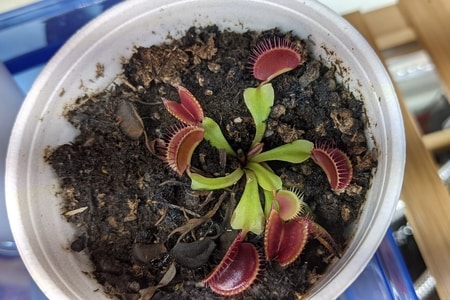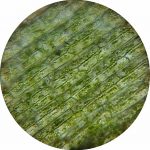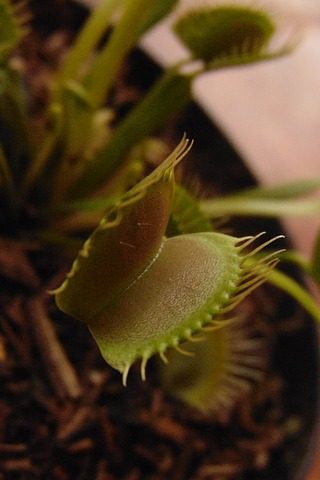 Venus flytraps are carnivorous plants. Their natural habitat characterizes with poor soil (nutrient-free). Because of the lack of nutrients in their environment, Venus flytraps evolved to be successful predators. They use the nutrients from bugs they catch and consume to supplement their diet and thrive. But, are those bugs required? Can Venus flytraps live without bugs?
Venus flytraps are carnivorous plants. Their natural habitat characterizes with poor soil (nutrient-free). Because of the lack of nutrients in their environment, Venus flytraps evolved to be successful predators. They use the nutrients from bugs they catch and consume to supplement their diet and thrive. But, are those bugs required? Can Venus flytraps live without bugs?
Short answer:
Venus flytraps can survive without consuming prey. However, not consuming insects can impact their health.
Venus flytraps do not need to catch prey to survive. Yet, the word survive is a bit extreme. Technically as humans, we could live for several days without food as long as we have water. But our goal is not only to survive but also to be reasonably healthy and able to perform daily activities.
So, let’s expand in the details of how Venus flytraps can survive without food. Also, if you own a Venus flytrap and your plant is not getting any bugs, you should consider reading along. I will be sharing some tips to keep your plant healthy, taking into consideration feeding recommendations.
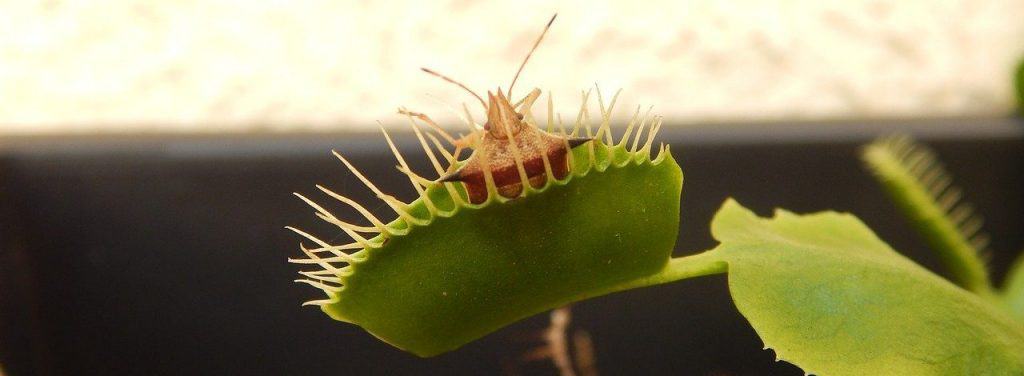
How can Venus flytraps survive without bugs?
One unique characteristic of the plant kingdom is that plants can produce their own food. They generate their food through the photosynthesis process. During photosynthesis, plants utilize sunlight to synthesize food from carbon and water. Venus flytraps catch bugs with their traps and digest them with enzymes, but they consume insects as a supplement to their diet (due to the lack of nutrients in their habitat).
Venus flytraps exist thanks to photosynthesis, as they produce their own fuel. Yet, Venus flytraps grow in inferior soil (lacks nutrients). In that environment, their diet is not complete. The small prey they catch and consume serves as that extra nutrient boost. Venus flytraps extract Nitrogen, Phosphorus, Potassium, and other elements from their victims.
You might have noticed Venus flytraps exhibit a bring green color. The color is associated with the green color pigment of chlorophyll (vital for photosynthesis).
In summary, Venus flytraps produce their own food through photosynthesis. Still, bugs provide a crucial supplement to their diet. Now, let’s explore what happens when Venus flytraps do not catch any prey.
What happens to Venus flytraps when they live without insects?
Natural Habitat
Venus flytraps are native to the wetlands on the East Coast of the United States. There, they are only found in the states of South Carolina and North Carolina. Both of those states characterize with high humidity, an abundance of sunshine, and high temperatures during summer months. Most of the year, the conditions are optimal for Venus flytraps to catch insects. But, during winter times, it can be a challenge.
In the wild, Venus flytraps can catch prey most of the time. But, if they are unsuccessful, they can patiently wait for the next victim. They won’t experience any radical effect as long as they catch a bug every few months.
During winter, the conditions are more complicated. Some insects enter a diapause state in the winter, which is similar to the hibernation process. Then, Venus flytraps have more difficulty catching insects due to the lack of possible victims and environmental conditions that can obstruct their trapping mechanism (like frost or snow, for example).
Indoors Effects
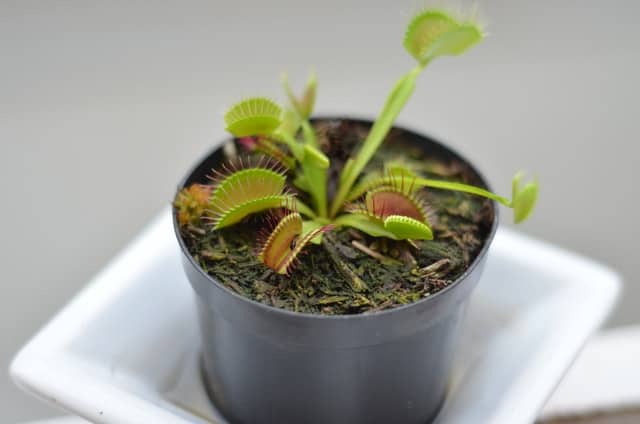
Venus flytraps require particular environmental conditions to thrive. When you grow these plants at home, you must do your best to replicate their natural habitat.
Some growers place their Venus flytraps outside, in their garden, patio, or balcony. Even if the area is not their natural habitat or an area with lots of vegetation, most plants will be able to catch enough prey to grow healthy when they are outdoors.
Growing Venus flytraps indoors is slightly harder, since your plants won’t feed itself. Again, your plant won’t die without bugs, but it will be weaker and grow slowly over time. It might seem like nothing to worry about, but a more fragile plant is more likely to die if any environmental condition is off, like improper lighting, humidity, or temperature.
I would recommend taking further steps if you grow Venus flytraps indoors. Feeding them can make a huge difference and ensure you are a successful grower. Read below for more information.
Recommendations: Growing Venus flytraps that can’t catch prey
I grow Venus flytraps indoors. I built my setup a few years ago, and after several changes, I got a reliable grow area for my plants. Since the installation is ready, I do not need to monitor my plants as often. However, the lack of natural food (live insects) is a task I am consistent with according to a self-made schedule.
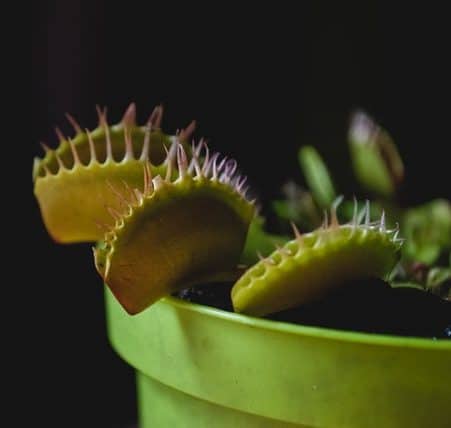
I enjoy growing carnivorous plants, and I want to let them grow, develop, and flourish as much as possible. Without bugs, your plants will never thrive. I highly encourage you to feed your Venus flytraps.
Feeding Venus flytraps is not a difficult task. Also, it is not time-consuming. Here is a quick summary guide.
What to feed Venus flytraps?
Venus flytraps consume many different types of bugs crickets, beetles, grasshoppers, spiders, slugs, flies, and ants. You can catch a few insects on your own and feed your plant. Yet, that can be difficult if you don’t have a garden. Then, you can buy blood worms or dead insects. They sell them online and in pet stores.
Feeding Schedule
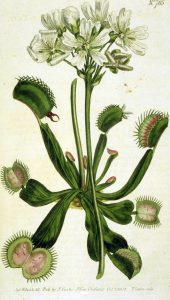
You do not need a strict schedule to feed your plant. If you skip a feeding, you won’t kill your Venus flytrap. Still, been consistent can help you monitor your plant’s health. It is recommended to feed your plant once every 2-6 weeks. Also, you only need to feed one trap within the plant.
Observing the trapping mechanism of Venus flytraps is fascinating. It is a big encouragement to feed your plant. Yet, there is a lot more information on the Venus flytrap feeding process. The link below is a complete guide to feeding Venus flytraps. Head over to the article to get all the details!
Complete Guide: How to Feed a Venus Flytrap?- Live and Dead Prey Options
Can Venus flytraps survive without food?
This is a tricky question. Venus flytraps can not live without food; they will die. But, the fuel from Venus flytraps is produced in-house. Thanks to the photosynthesis process, Venus flytraps produce their own food naturally. The insects they catch are not their whole diet, but only a supplement. The reason why some people believe Venus flytraps die without bugs is that they are unaware that Venus flytrap, like other plants, can produce their own nourishment.
Summary
Venus flytraps have evolved fascinatingly to be successful predators. In the wild, they catch prey and supplement their diet with additional nutrients. Can Venus flytraps live without bugs? Yes. Since insects are just a supplement or extra boost, Venus flytrap can live without them.
When you grow Venus flytraps outside of their natural habitat, you can do so without feeding your plant. But I wouldn’t recommend following this practice, especially if you are a novice grower. New growers make mistakes that can potentially kill your plant. Not feeding a Venus flytrap will weaken them and increase the chances of failure.
Of course, feeding your plant is not the only factor to consider when growing Venus flytraps. To be a successful grower, you must be methodic and follow specific care instructions. Follow the link below to read the complete care instructions. Best of luck and enjoy it!
Venus flytrap care instructions
Sources
- https://www.fws.gov/southeast/wildlife/plants/venus-flytrap/
- D’Amato, P. (2013). The Savage Garden. Berkeley, Unites States: Ten Speed Press.


